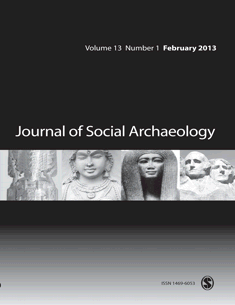
JOURNAL OF SOCIAL ARCHAEOLOGY
Scope & Guideline
Advancing Understanding of Past Societies
Introduction
Aims and Scopes
- Interdisciplinary Approaches:
The journal embraces interdisciplinary research, integrating methodologies from anthropology, sociology, geography, and history to enrich archaeological interpretations and understandings. - Decolonization and Indigenous Perspectives:
A significant focus on decolonizing archaeology, the journal highlights Indigenous methodologies and perspectives, advocating for the inclusion of marginalized voices in archaeological narratives. - Heritage and Identity:
Exploration of the role of heritage in shaping identities, particularly in postcolonial contexts, addressing how archaeological heritage influences contemporary cultural and national identities. - Community Engagement and Grassroots Initiatives:
Emphasis on community archaeology and grassroots heritage movements, examining how local communities engage with and reinterpret their cultural heritage. - Environmental and Political Contexts:
Research that situates archaeological findings within broader environmental and political contexts, exploring how heritage interacts with issues such as climate change, conflict, and colonial histories.
Trending and Emerging
- Decolonization of Archaeology:
There is a strong trend towards decolonizing archaeological practices, with a focus on integrating Indigenous knowledge systems and challenging colonial legacies within archaeological narratives. - Post-Conflict Heritage Management:
Emerging themes around post-conflict heritage management are gaining traction, particularly in regions recovering from war, highlighting the role of archaeology in healing and community rebuilding. - Cultural Heritage and Climate Change:
Increasing attention is being directed towards the impacts of climate change on cultural heritage, with researchers exploring how archaeological practices can address and mitigate these challenges. - Youth Engagement in Heritage:
A rising theme involves the active engagement of youth in heritage preservation efforts, emphasizing their role in safeguarding cultural heritage and fostering community involvement. - Interdisciplinary Environmental Archaeology:
There is a growing interest in the intersection of archaeology with environmental studies, focusing on how past human-environment interactions inform current ecological issues.
Declining or Waning
- Traditional Archaeological Methods:
There has been a noticeable decline in publications relying solely on traditional archaeological methods, such as excavation reports, as the journal increasingly favors interdisciplinary and social approaches. - Eurocentric Perspectives:
Research that predominantly reflects Eurocentric archaeological narratives is becoming less common, as there is a greater emphasis on non-Western perspectives and local narratives. - Material Culture Focus:
While material culture studies remain relevant, there seems to be a reduction in papers that solely focus on artifact analysis without contextualizing them within social frameworks or contemporary relevance. - Static Heritage Interpretations:
Papers that present static or unchanging views of heritage, without considering its dynamic nature and ongoing transformations, are less frequently published, reflecting a shift towards more fluid understandings of heritage. - Historical Archaeology in Isolation:
Themes centered on historical archaeology as a standalone discipline are waning, as the journal increasingly integrates historical contexts with contemporary issues and interdisciplinary approaches.
Similar Journals
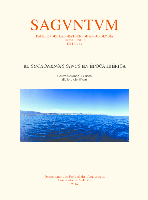
SAGVNTVM-Papeles del Laboratorio de Arqueologia de Valencia
Pioneering Insights into the Archaeological Landscape of Valencia.SAGVNTVM-Papeles del Laboratorio de Arqueologia de Valencia is an esteemed open-access journal dedicated to advancing the field of archaeology, published by the Department of Prehistory and Archaeology at the University of Valencia, Spain. With an ISSN of 0210-3729 and an E-ISSN of 2174-517X, the journal has been a vital resource for scholars since its inception in 1962, ensuring that high-quality archaeological research is readily available to the global academic community. Notably, it holds a distinguished Q2 ranking in both Archeology and Archeology within the arts and humanities categories as of 2023, reflecting its commitment to rigorous scholarship and significant contributions to the field. The journals' Scopus rankings further affirm its relevance, positioned at #188 of 413 in Arts and Humanities and #179 of 354 in Social Sciences. Researchers and professionals alike can delve into a variety of topics, benefiting from the journal’s rich archive from 2017 to 2023. With a mission to disseminate knowledge and foster dialogue in archaeology, SAGVNTVM serves as an essential platform for investigators, students, and practitioners interested in the latest archaeological findings and methodologies.
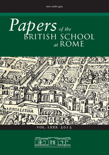
Papers of the British School at Rome
Exploring the Depths of Rome's Cultural HeritagePapers of the British School at Rome, published by Cambridge University Press, is a prestigious journal that has been contributing to the fields of archaeology, history, and visual arts since its inception in 1902. With an ISSN of 0068-2462 and an E-ISSN of 2045-239X, this journal serves as an essential platform for innovative research and scholarly dialogue that explores the rich cultural heritage of Rome and its surrounding areas. The journal is ranked in the top quartiles for various categories, including Q1 in Visual Arts and Performing Arts, reflecting its significant impact and relevance in these fields. Despite its non-open access status, the journal boasts a robust readership, comprising researchers, professionals, and students eager to delve into the scholarly discussions it fosters. The Scopus rankings further affirm its reputation, with high percentiles in key areas, marking it as a vital resource for anyone invested in the academic study of classical and contemporary Roman culture. The journal's objective is to promote interdisciplinary research, making it a cornerstone for advancements in art history and archaeological studies.
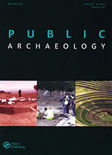
Public Archaeology
Uncovering Stories, Engaging CommunitiesPublic Archaeology is a leading journal in the field of archaeology, published by Routledge Journals, Taylor & Francis Ltd in the United Kingdom. Established in 2004, this journal focuses on the interaction between archaeology and the public, providing a platform for discussions that bridge academic research and community engagement. With an impressive impact factor and ranked in the Q2 quartile for both Arts and Humanities and Social Sciences archaeology categories, it holds a prominent position as one of the top journals in its field, reflecting the high caliber of its published work. Researchers, professionals, and students alike will find valuable insights through its comprehensive articles and case studies that explore contemporary issues within archaeology and the implications of these on society. Despite not being openly accessible, the journal has established itself as an essential resource for innovative research and dialogue, making it an invaluable asset for anyone interested in the dynamic field of public archaeology.

JOURNAL OF THE POLYNESIAN SOCIETY
Celebrating the Diversity of Pacific CulturesJOURNAL OF THE POLYNESIAN SOCIETY, published by Polynesian Soc Inc, is a distinguished periodical that aims to disseminate high-quality research in the fields of anthropology, archaeology, and cultural studies. With an ISSN of 0032-4000 and E-ISSN 2230-5955, this journal serves as a key resource for scholars and practitioners interested in the rich historical and cultural narratives of the Polynesian region. Since its inception, the journal has published a multitude of scholarly articles, reflecting a convergence of research from 1971 to 2022, thus establishing itself as a foundational text within its domain. The journal is indexed in notable categories with a Q4 ranking in anthropology and a Q3 in both archaeology and cultural studies as of 2023, highlighting its relevant contributions to the academic community. Moreover, its impressive Scopus ranks position it within the 80th percentile for archaeology and the 67th percentile for anthropology, showcasing its dedication to scholarly excellence. Although not an open-access publication, the journal remains a vital avenue for academic discourse and exchange, making it a significant resource for researchers, professionals, and students dedicated to understanding the diverse cultures of the Pacific Islands.
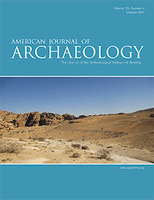
AMERICAN JOURNAL OF ARCHAEOLOGY
Decoding the Past for Tomorrow's ScholarsThe American Journal of Archaeology (ISSN: 0002-9114, E-ISSN: 1939-828X), published by the esteemed University of Chicago Press, stands as a leading scholarly journal in the field of archaeology, celebrated for its rigorous peer-reviewed research. With an impressive impact factor that places it in the Q1 quartile for both archaeology and archaeology within the arts and humanities, this journal ranks among the top 15% in its field, according to Scopus metrics. It serves a global audience of researchers, professionals, and students, facilitating the dissemination of innovative findings from excavations, historical analyses, and methodological advancements. While primarily available through subscription, the journal's archives and features provide invaluable resources for deepening one's understanding of the past and engaging with current archaeological discourse. Operating from its home in Chicago, USA, the American Journal of Archaeology actively contributes to the advancement of knowledge and scholarship in archaeology, making it an essential platform for those invested in the exploration of ancient civilizations and cultural heritage.
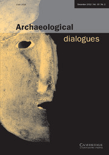
Archaeological Dialogues
Connecting Scholars Through Groundbreaking Archaeological InsightsArchaeological Dialogues is a premier journal published by Cambridge University Press that serves as a vital forum for innovative discourse in the field of archaeology. Established in 1994, this journal has excelled in fostering scholarly communication and is recognized with a prestigious Q1 ranking in both Archaeology and Arts and Humanities, highlighting its significant impact in these domains. With an impressive impact factor, the journal commands a strong presence in the academic community, as reflected in its Scopus rankings, where it is positioned in the top 25% for archaeology and arts and humanities disciplines. Archaeological Dialogues seeks to explore diverse perspectives and methodologies in archaeology, offering researchers, professionals, and students invaluable insights into contemporary issues and debates. While not an open-access journal, it remains accessible through institutional subscriptions, ensuring that groundbreaking research reaches a broad audience engaged in the ever-evolving landscape of archaeological study. Located in the United Kingdom, this journal not only promotes interdisciplinary connections but also plays a pivotal role in shaping the future of archaeological research and discussion.

Slovenska Archeologia
Connecting scholars to the treasures of Slovakia's archaeological landscape.Slovenska Archeologia is a prominent journal published by the Slovak Academy of Sciences, Institute of Archaeology, dedicated to advancing the field of archaeology through rigorous scholarly research and insightful scholarship. With an ISSN of 1335-0102 and an E-ISSN of 2585-9145, this journal has been a vital platform for archaeologists and academics since its inception, converging its insightful publications from the years 2017 to 2023. Awarded a Q2 ranking in the field of archaeology across both arts and humanities categories, it holds a respectable position in the Scopus rankings, recognizing its contributions to the discipline. Based in Slovakia, the journal is an essential resource for professionals, researchers, and students interested in archaeological findings and methodologies. While it does not currently offer Open Access options, its commitment to promoting high-quality research makes it a valuable addition to the academic community.
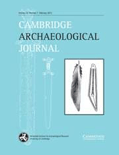
CAMBRIDGE ARCHAEOLOGICAL JOURNAL
Revealing Stories Through Archaeological ExcellenceThe Cambridge Archaeological Journal, published by Cambridge University Press, is a premier academic journal dedicated to archaeology and cultural studies. With an ISSN of 0959-7743 and an E-ISSN of 1474-0540, it has established itself as a leading platform since its inception in 1991, showcasing groundbreaking research that significantly contributes to our understanding of human history and cultural heritage. The journal currently ranks in the top quartile (Q1) across various categories, including Archaeology and Cultural Studies, underlining its impact and relevance in the field. The impact factor reflects its esteemed position, with Scopus ranks placing it within the 90th to 93rd percentiles among its peers. Researchers, professionals, and students alike benefit from its insightful analyses and interdisciplinary approaches, making it an essential resource for advancing knowledge in archaeology and related fields. The journal is based in the United Kingdom, at the Edinburgh Building, Shaftesbury Rd, CB2 8RU, Cambridge, England, and continues to drive scholarly conversations through its commitment to excellence and innovation in archaeological studies.
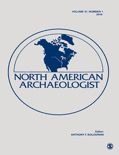
NORTH AMERICAN ARCHAEOLOGIST
Uncovering the Past, Shaping the FutureNORTH AMERICAN ARCHAEOLOGIST, published by SAGE PUBLICATIONS INC, is a prestigious journal that serves as an essential resource for professionals and scholars in the field of archaeology. With its ISSN 0197-6931 and E-ISSN 1541-3543, the journal aims to disseminate high-quality research that contributes to the understanding of the historical and cultural significance of North America from prehistory to the present. As of 2023, it holds an impressive Q2 category in Archaeology and ranks within the Q1 tier for Archaeology (arts and humanities), positioning it among the top journals in its field. Its Scopus rankings further emphasize its significance, reflecting a commendable percentile standing that underscores its influence in both arts and humanities and social sciences. The journal is committed to offering a platform for innovative research and scholarly discussion, making it invaluable for researchers, professionals, and students dedicated to advancing archaeological knowledge.

Egyptian Journal of Archaeological and Restoration Studies
Exploring the Depths of Archaeological Innovation.Welcome to the Egyptian Journal of Archaeological and Restoration Studies, a vital resource for scholars and practitioners in the field of archaeology and restoration. Published by the renowned SOHAG UNIV PUBLICATION CENTER-SUPC, this journal aims to disseminate cutting-edge research that illuminates the rich archaeological heritage of Egypt and beyond. With ISSN 2090-4932 and E-ISSN 2090-4940, this journal showcases innovative methodologies and interdisciplinary approaches, significantly contributing to our understanding of cultural heritage preservation. The journal's growing influence is reflected in its Q3 ranking in multiple categories, including Archaeology, Conservation, and Cultural Studies as of 2023, alongside its noteworthy placement within the Social Sciences. Open access options provide wider accessibility to essential studies, making it an indispensable tool for researchers, professionals, and students alike. Join us in exploring the past and shaping the future of archaeological scholarship.